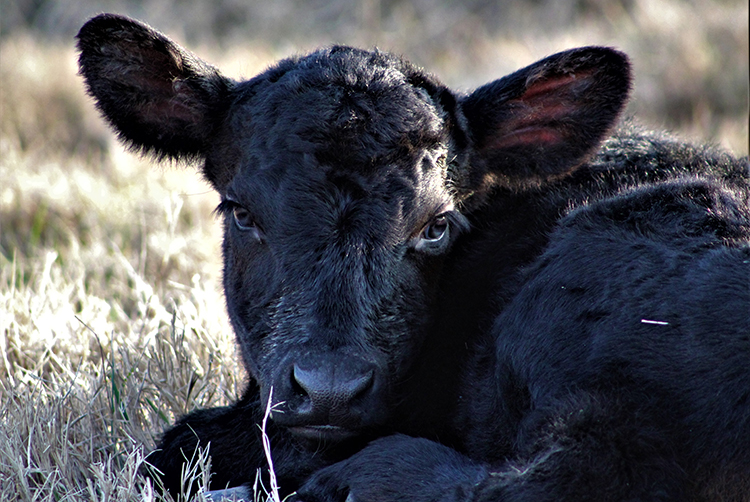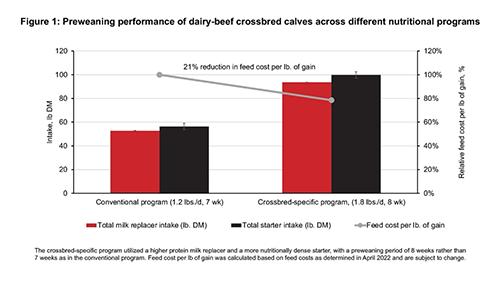
Over the last few years, raising dairy-beef crossbred calves has become a common production practice for dairy producers across the country. Breeding dairy cows to beef sires has allowed producers to diversify their revenue streams by taking advantage of the strong beef market during volatile dairy markets.
Researchers at the Purina Animal Nutrition Center have diligently worked to better understand the specific nutritional needs of crossbred calves by conducting multiple research demos. The demos focused on preweaning nutritional needs, but the findings have shown early-life nutrition has a significant impact on growth and performance for these calves post-weaning as well.
After three years of intensive research, we can confidently bust four common myths when it comes to successfully feeding crossbred calves.
Myth #1: You can feed dairy-beef crossbred calves less total milk replacer.
Knowing that a dairy-beef crossbred calf is much more efficient compared to a Holstein calf, many believe they can be fed less milk replacer and still see similar growth and performance as you would see in a Holstein that is fed more. The truth is when a crossbred calf is fed a higher plane of nutrition of 1.5 to 1.8 pounds of milk replacer per day, they show improved performance and producers will see decreases in cost per pound of gain. Figure 1 demonstrates the preweaning performance of dairy-beef crossbred calves across different nutritional programs.

Myth #2: Dairy-beef crossbred calves can be weaned earlier.
Weaning calves early reduces their feed efficiency while increasing the cost per pound of gain. Our research shows dairy-beef crossbred calves tend to become more aggressive eaters as they grow, so offering both milk replacer and starter feed in tandem until 8 weeks of age sets them up for increased performance and efficiency post-weaning. We must give calves ample time to develop a rumen ready for dry feed and gain the body capacity to handle a large rumen.
Myth #3: Feeding dairy-beef crossbred calves more will only equate to more hip height.
The body composition of a dairy-beef animal is very different from a Holstein calf. When fed the same high plane of nutrition, there is greater bodyweight gain and less hip height gain in crossbred calves than in Holstein calves. When crossbred calves are fed a higher plane of nutrition, they prioritize muscle gain with moderate frame growth that is proportionate to the rest of the body if enough protein is provided.
Myth #4: Dairy-beef crossbred calves can be fed a lower percentage of protein.
Milk replacer and starter feed high in protein are crucial for adequate muscle growth in the preweaning phase. Feeding this same starter feed until at least 12 weeks of age will lead to continued efficiency, muscle growth, and performance in the post-weaning phase and, ultimately, to a lower cost per pound of gain.
Raising dairy-beef crossbred calves is a value-added production strategy that is here to stay, and dairy producers have a tremendous opportunity to influence the success of this strategy through early-life nutrition.

LAND O LAKES is a trademark of Land O’Lakes, Inc. ©2022 Land O’Lakes, Inc. All rights reserved